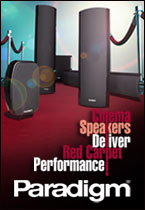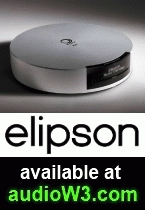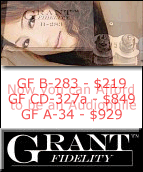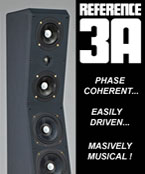
I often don’t know the price of the audio components that I am about to review. My editor doesn’t tell me and I don’t ask. And I often prefer it this way, at least for the first couple of weeks. This allows me to initially judge the components’ performance without my opinion be-ing influenced by knowing their price. This time, added to my audio rack were two new Pioneer Elite Pure Audio components: the SX-A9-J integrated amplifier and the PD-D6-J CD/SACD player. Of course, for the context of this review it makes sense to know the prices right away; the integrated amplifier retails for $999 and the CD/SACD player goes for $599. A matching, less expensive SX-A6-J integrated amplifier is also available for $599.
First, let me give you a guided tour of the two pieces. The Pure Audio components have a completely new look that distinguishes them from other Pioneer offerings: curved-profile, brushed gray aluminium front panels and white backlit LCD displays. The design and finish cer-tainly hint at the fact that these are higher performance components. Each component features a rigid dual layer honeycomb chassis construction, with good weight and a quality feel. All Pure Audio components also feature AIR Studios Sound Tuning which means that some of the best sound engineers in the business were involved in the development of these products. The goal of this tuning is to reproduce music that sounds as close to the original recordings as possible. Both units also have detachable IEC mains connectors should you feel like upgrading the power cords in the future.
The SX-A9-J features two class-AB dual mono symmetrical amps which operate in pure class-A mode in low power, therefore eliminating switching and crossover distortion. Each channel is rated at 55 watts (into 8 Ohms) and 70 watts (into 4 Ohms). The amplifier’s selection of inputs includes four RCA line level and one phono for moving magnet or moving coil turntables. A nice feature is the inclusion of a USB input which allows a PC to send its music digitally to the amplifier. Pioneer’s Sound Retriever feature helps to restore some of the sound quality lost by compression from digital files. One set of tape outputs and pre-amplifier outputs are also pro-vided. A USB sound output would have been nice to see. That way you could record vinyl or other sources directly to the computer. All connections are gold plated and the speaker terminals accept a variety of connectors as well as bare wire. As expected, an AM/FM tuner is also on board, as is an XM antenna connector.
The PD-D6-J provides playback of CD, SACD, CD-R and CD-RW as well as discs loaded with MP3 and WMA music files. Onboard 192 kHz/24-bit twin Burr Brown D/A converters en-sure the reproduction of subtle music details and deliver enhanced linearity, dynamic range and distortion response. The Legato Link Conversion PRO ensures minimum phase shift across the entire audible frequency band which results in a more natural sound. The PD-D6-J uses a single chip to decode SACD DSD to reduce the digital signal path and a low jitter crystal oscillator cir-cuit as a precise master clock. A Pure Audio listening mode switches off the digital circuitry and the LCD display to provide the purest analogue sound reproduction. A typical set of audio out-puts are provided in the back: RCA, coaxial and optical.
After a couple of weeks of burn-in, I began by auditioning the components separately in my main listening room, connected to my reference JBL SVA2100 loudspeakers. First up was the PD-D6-J disc player. I connected it to a Classe Audio CA-2100 power amplifier and an NAD M3 integrated amplifier (used for its pre-amplifier section only). I started by listening to one of my favourite pop CDs, The Best Of Sade. This disc contains three great tracks which I normally use to get an idea of how well an audio component handles space and high frequency content. Track eight, Stronger Than Pride, contains a lot of reverb and airy sounds that help create an out of this world atmosphere. When compared to the vinyl version of this album, which plays with finesse and subtle movements, it is easy to hear how most CD players reproduce this section in-correctly by introducing a haze or harshness. It was pleasing to find that the PD-D6-J disc player created a vast soundstage with smooth changes in the dynamics. The atmosphere that I’ve learned to appreciate in this song was present. When listening to the Cherish The Day track, some of the claps should reverb well into the background. In a finer audio system you should also notice a very slight spring reverb sound against a more long tailed reverb that fades into al-most infinity through a long tube. Again this disc player got this better than I expected, better than some of the more expensive players that I’ve heard recently. The most noticeable differ-ence between this player and vinyl or the much more expensive NAD M55 disc player was in the bass line. The low frequencies sounded slightly leaner played through the PD-D6-J. Overall, the PD-D6-J proved to be a versatile and very tight sounding disc player. It played all of the CDs that I listened to with an elegant finesse rather than brute force.
Moving into the SACD territory I listened to Pink Floyd’s Dark Side of the Moon album. Normally I pay attention to how well a player can handle the bass in the first track and how it flows from the quiet pulse to the rise of the cymbals and screaming voices. When done cor-rectly, this passage should transition smoothly without any added harshness. You shouldn’t have to play with the volume level to compensate for a higher noise floor. The added resolution of the SACD format produced a more realistic presentation and added great depth to the music. When I listened to Beethoven’s Living Stereo SACD, the PD-D6-J produced that little sparkle that only a good reference recording can when played on a good disc player. The strings had that slight touch of metallic sound combined with the resonance of the wooden body of the instruments. I could hear the bow brush across the strings if I focused on it, but not at the expense of interfering with the whole picture of the symphony.
To evaluate the performance of the SX-A9-J integrated amplifier, I used the NAD M55 disc player as the source. From the moment I began my critical listening, the SX-A9-J showed that it liked to present music in a very large scale. Much like listening to audio in a well designed pro-duction studio, I was able to clearly pick out the individual layers and sounds of the music and understand how they relate to the mix as a whole. Don’t get me wrong though, the various layers of music played together in perfect harmony. Without a doubt AIR Studios’ involvement in the design has something to do with the characteristics of this amplifier. As I continued listening to various CD and SACD selections, I found the SX-A9-J to provide formidable control of the speakers. I also noticed that it allowed the NAD disc player to shine through in this system. The NAD player presented the complex sound textures and wonderful harmonics and the SX-A9-J allowed all of this to come through. An integrated amplifier of lesser quality would not allow me to enjoy the true nature of this disc player. I found the soundstage to be of good depth, although I would have enjoyed a slightly larger soundstage width.
The SX-A9-J produced pretty smooth high frequencies. Only when pushed near its limits they began sounding a little aggressive. The midrange and bass performance was excellent in this price category. The mids sounded very detailed and clean. The vocals sounded clean and natu-ral. Overall the SX-A9-J produced very detailed sound that was ever so slightly on the dryer side. It sounded solid-state but in a good way. There was no noticeable digital stepping or switching noise. Classical recordings sounded natural and flowed with great control. Compared to the much more expensive NAD M3, this amp came in a little shy in the harmonic fullness and air. Not too shabby!
When I listened to the Pioneer PD-D6-J disc player connected to the SX-A9-J integrated amplifier, I found that the two components complement each other very well. Each component brought forward the strengths of the other, just like components should in a well designed sys-tem. If you’re working with a budget of $1600 for an integrated amp and a disc player, this may just be the right system for you. If you’ve got a smaller budget, check out the more affordable SX-A6-J integrated amp. An enjoyable 2-channel music system doesn’t have to cost thousands of dollars. The Pioneer Pure Audio components are a great example of this.
Manufacturer:
Pioneer Electronics
www.pioneerelectronics.ca
905-479-4411
Pioneer Elite SX-A9-J integrated amplifier
Price: $999 CDN
Pioneer Elite PD-D6-J disc player
Price: $599 CDN
Click here to discuss this article on the CANADA HiFi Forum














